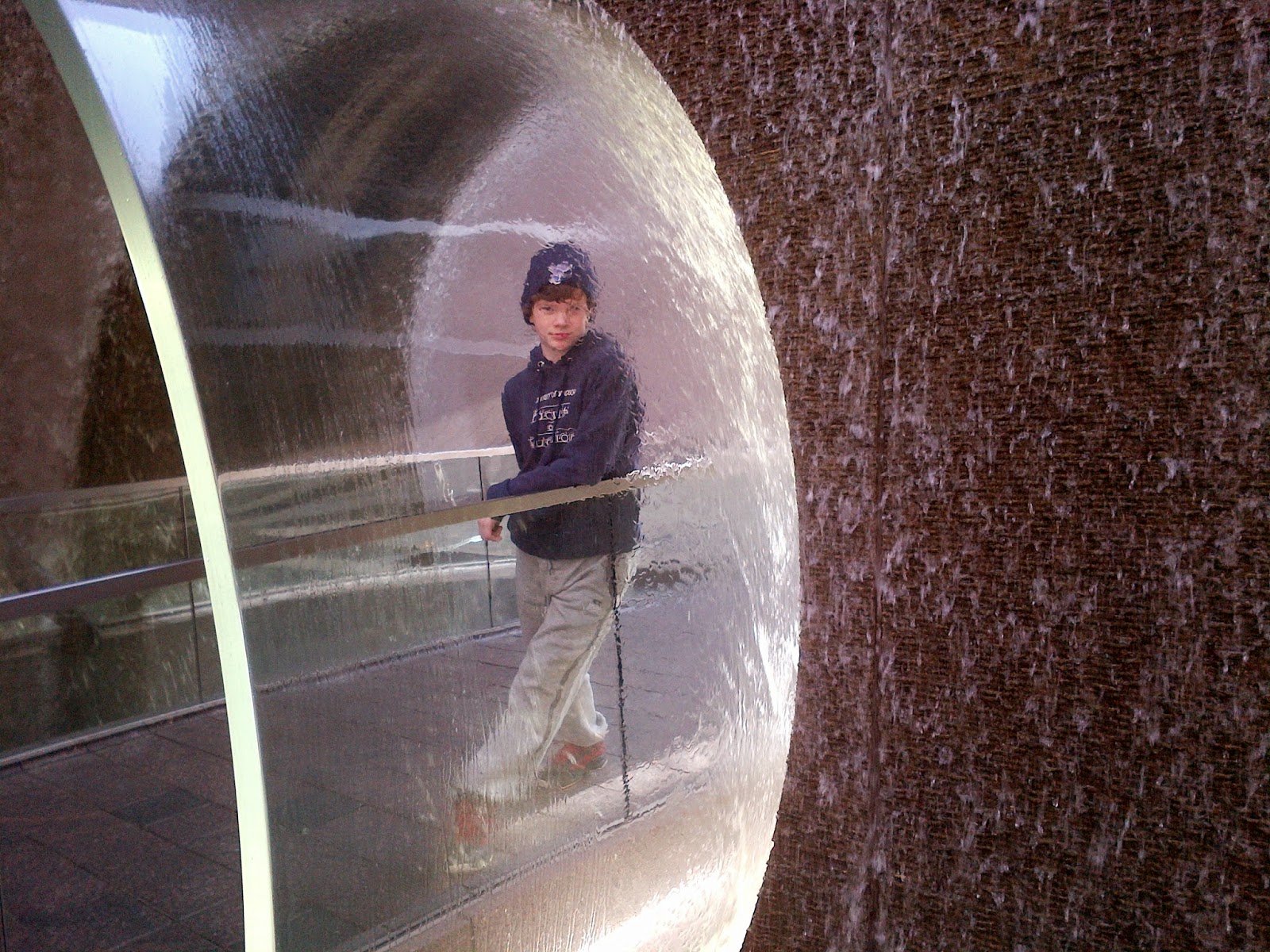IV.
Douglas’s Banff:
7 people and 3 Chairs.
1 worn Couch
where
10000 bums have been.
My heyday was in the early 80s, my prime
teen years when
Everything had a new, firm, shiny skin.
Now my liver-spotted Carpets and
My drooping cushy Chair of my generation
Groans
Against the daily monotonous visits.
When will they all go home so I can retire?
V.
5° in July.
white, white blue water.
The reservations are for 9 but it
feels like dawn.
swimsuit still wet from night
before, clinging to bbody like a tongue on a steel post.
Put on a wetsuit,
they say,
No cotton, it will make you cold.
steel black wetsuits wet from
months gone by
sweat, fear still dripping; like
athletic shoes.
Did he say there were gloves?
On the boat.
Too much talk; must move, yah?
2 Daves; 4 boats.
We paddle fast; we don’t need to –
improves circulation.
Feet still numb; need ski heat
pack.
It would break apart in water
someone shivers. Figures.
We hide behind the men in front,
not because we are 1870 women
they are only bunkers for the
white white blue water.
“Portage Shotgun”
Dave makes up the names of
sections of river long forgotten,
pushed out with the originals into
the
white white water.
We see a sink hole,
Hole we yell
and we go down again into the white
water.
The boat is rubber so it bounces
back
bounces onto the top of an old
school bus
no heat, radiator broken.
We change quickly, fighting
against wet cold rubber that
sticks to our skins like leeches.
hard to find holes of pants, of
shorts
of socks to cover the growing
bubbles on our skin.
Here’s a hamburger.
Cold, but it silences the stuttering
in the head.
VI.
Banff
17 souvenir shops and the same
t-shirts in each:
Canadian flags, moose chasing
humans, bears chasing humans, the evolution’ of the Canadian, mosquitoes,
tents, ‘rules of hockey’, ‘why beer is better than women’, it’s all there – the
philosophy of a nation for just $9.99. Or two for $10.
Sometimes there is a ‘50% Off
Sale!’
Up to …in small print.
We take photos of the big black
bear in ‘OK!Gifts’; he seems harmless.
A horn sounds and a concert
begins.
‘Save the Bison’ in the square.
Pull up a plastic chair, and a hamburg.
Sweetgrass is for sale for smudging
ceremonies, but it’s not doing so well:
2 for 1!
Double the smudging; double the
spirit.
There is a dollar store around the corner, but you can’t
buy anything there for a $1.
We buy a flashlight for $1.50, and
a package of ‘tongue tattoos’. Try them out later.
Sun sets and the beer scent is
stronger. You can take a taxi home, but the price in Banff is twice as much
because the drivers dress up.











-Sawaya.jpg)












